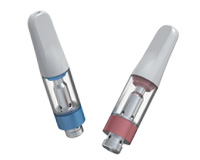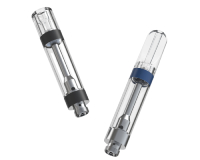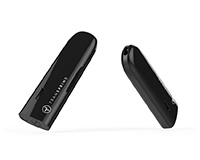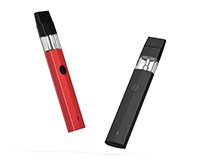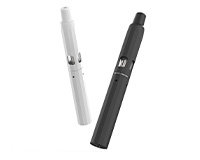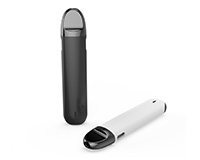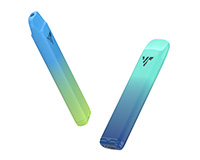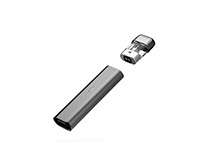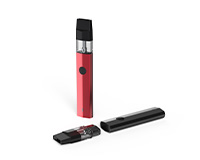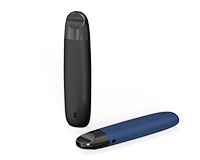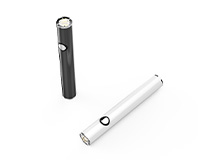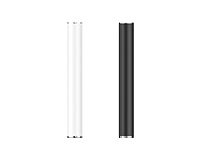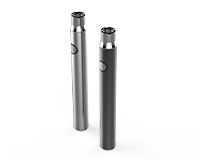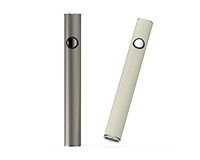What Temp to Vape Cannabis: Finding the Sweet Spot for Flavor, Potency, and Consistency
Vaping cannabis has evolved far beyond simply pressing a button and inhaling. Today’s consumers expect a balanced experience that preserves delicate terpenes, delivers cannabinoids efficiently, and adapts to different extract types. But behind every smooth hit is one critical factor: temperature control.
This leads us to the most important question—what temp to vape cannabis? Getting it right can be the difference between a flavorful, terpene-rich experience and a harsh, diminished one. For cannabis brands and hardware manufacturers, understanding this balance is not only about consumer satisfaction but also about positioning themselves at the forefront of innovation.
Is It Better to Vape at High or Low Wattage?
The debate between high and low wattage isn’t just a matter of personal preference—it’s about chemistry. Cannabis extracts behave differently depending on their composition, and the chosen wattage (which directly influences temperature) determines how those compounds are expressed.
1. Extract Type Matters
- Distillates: Highly purified, tolerate higher temps without flavor loss.
- Live Resin & Rosin: Rich in terpenes, thrive at lower wattages.
- Sauce & Full-Spectrum Extracts: Require balance—enough heat for vaporization but not too much.
2. The Role of Terpenes
Terpenes are volatile, each with unique boiling points. Too high a wattage burns them off; too low fails to activate cannabinoids. Balancing wattage preserves terpenes while ensuring cannabinoid delivery.
3. Environmental Temperature
Ambient conditions also impact performance. Cold climates thicken oil (needing higher wattage), while hot climates thin oil (risking leaks).
What Is the Best Setting for a Vape?
When it comes to defining the “best” setting for a cannabis vape, the conversation usually begins with the traditional three-stage voltage system. While simple and familiar, this system only scratches the surface of what cannabis extracts truly need. The real innovation lies in curve-based power output, which fine-tunes every puff down to the second, offering an experience that no fixed setting can replicate.
1. The Limitations of Three-Stage Voltage
The three-stage system (low, medium, high) has been a common feature in many devices:
- Low voltage protects flavor but often leaves oil under-vaporized.
- Medium voltage strikes a balance but doesn’t adapt to oil variability.
- High voltage delivers powerful clouds but risks degrading terpenes and cannabinoids.
While this approach gave consumers some flexibility, it remains a static solution in a world where cannabis oils are becoming increasingly diverse—distillates, live resin, rosin, and solventless all have different boiling points, viscosities, and terpene structures.
2. Curve-Based Power Output: Precision by the Second
Curve-based power output revolutionizes this landscape by shifting from static voltage to dynamic, second-by-second control within each puff. Instead of holding one voltage level, the device can start low, gently ramp up, and then either stabilize or taper down depending on the extract’s needs.
This precision unlocks new benefits:
- Per-Second Control: Each moment of the puff can be engineered—flavor-forward at the start, cloud-heavy in the middle, smooth on the finish.
- Extract Customization: Brands can design unique curves for different oils. For example, rosin might require a soft curve to protect delicate terpenes, while distillate benefits from a stronger mid-puff ramp to release cannabinoids efficiently.




3. Transpring: The First to Pioneer Curve Control
Transpring was the first company in the cannabis vape hardware industry to research and propose curve-based output control. This leadership has set a new standard for how brands can design and deliver vaping experiences.
But Transpring’s approach goes even further:
- Built-In Variable Curves: Unlike others, Transpring cannabis vape pen devices allow a puff to automatically switch to a different curve according to the puff numbers. This creates a layered vaping journey—starting with terpene richness and finishing consistently.
- Atomizer-Embedded Curves: Transpring’s technology places curves inside the atomizer itself, meaning the cannabis cartridge can control the battery output. This ensures compatibility and precision across devices, regardless of external variables.
- Brand-Customized Experiences: By embedding extract-specific curves, each brand can offer a signature puff profile that reflects its product philosophy, ensuring differentiation in a competitive market.
Conclusion
So, what temp to vape cannabis? There’s no single answer. It varies by extract, terpenes, and environment. High wattage isn’t always better, nor is low. The real solution lies in dynamic control.
Three-stage settings helped, but curve-based output is the future. By tailoring curves to oil types, brands can offer flavor, smoothness, and reliability. Transpring pioneered this innovation, enabling brands to differentiate and build trust.
The future of cannabis vaping isn’t about high vs. low—it’s about smart control. And with curve-based technology, brands can win loyalty and market share.




